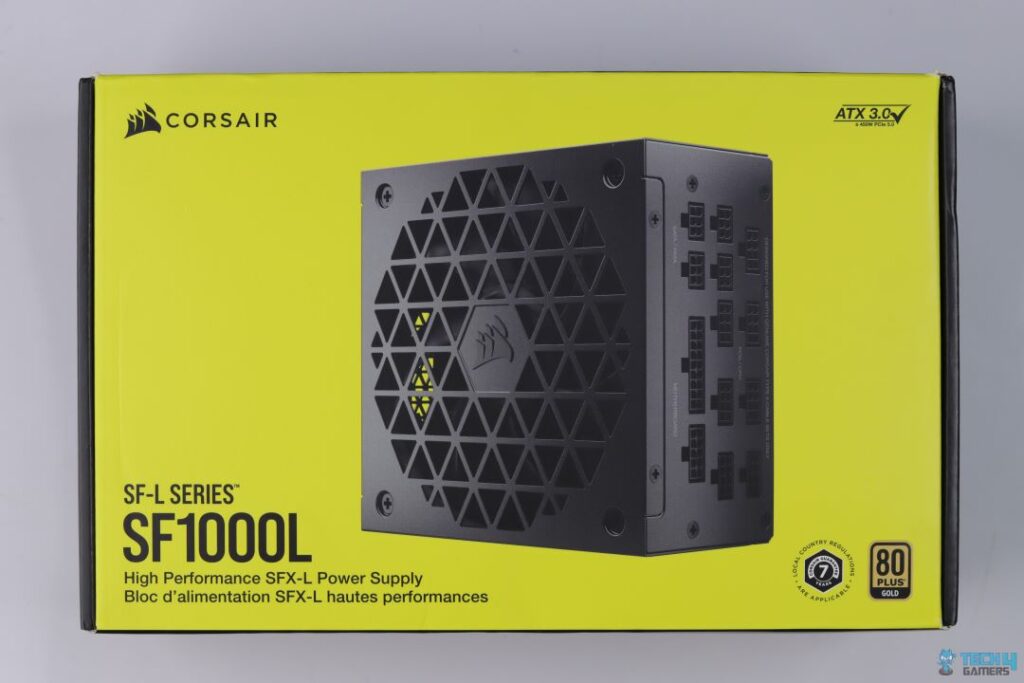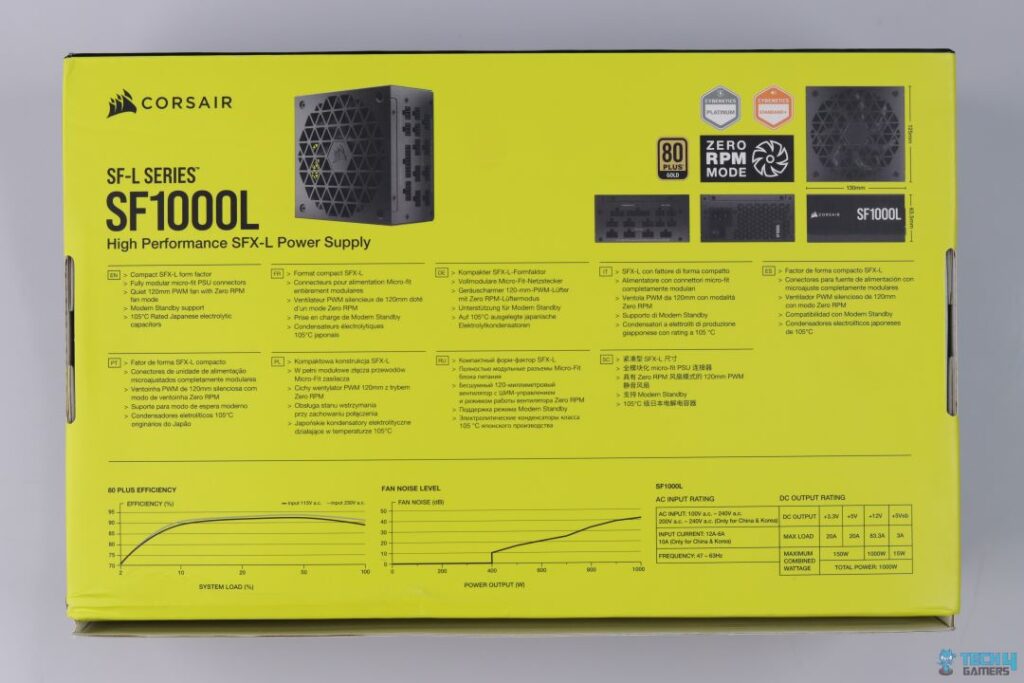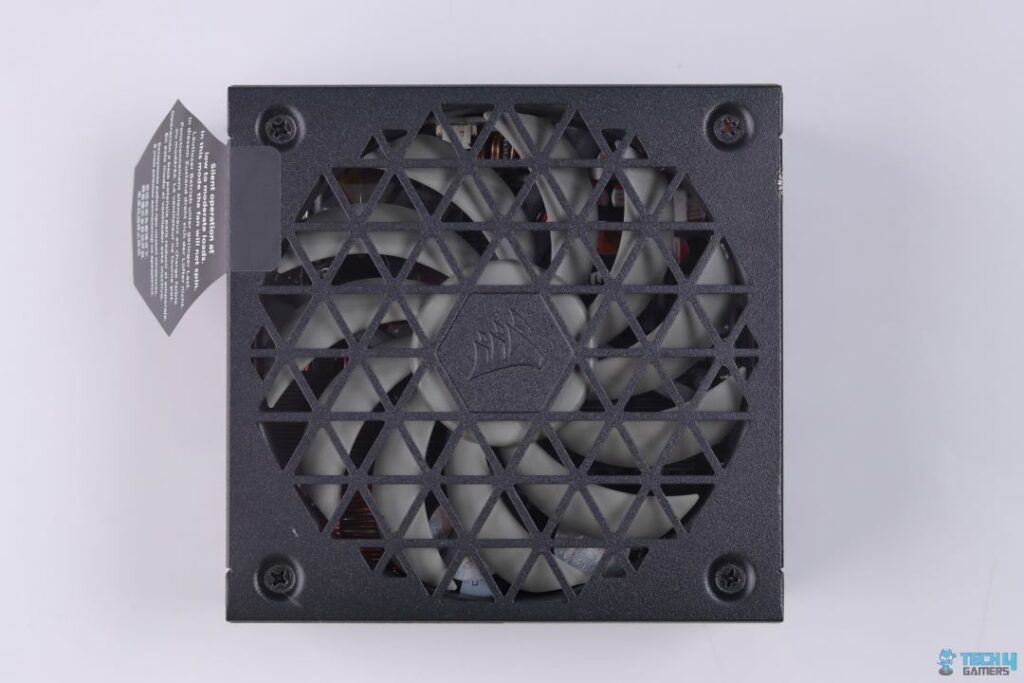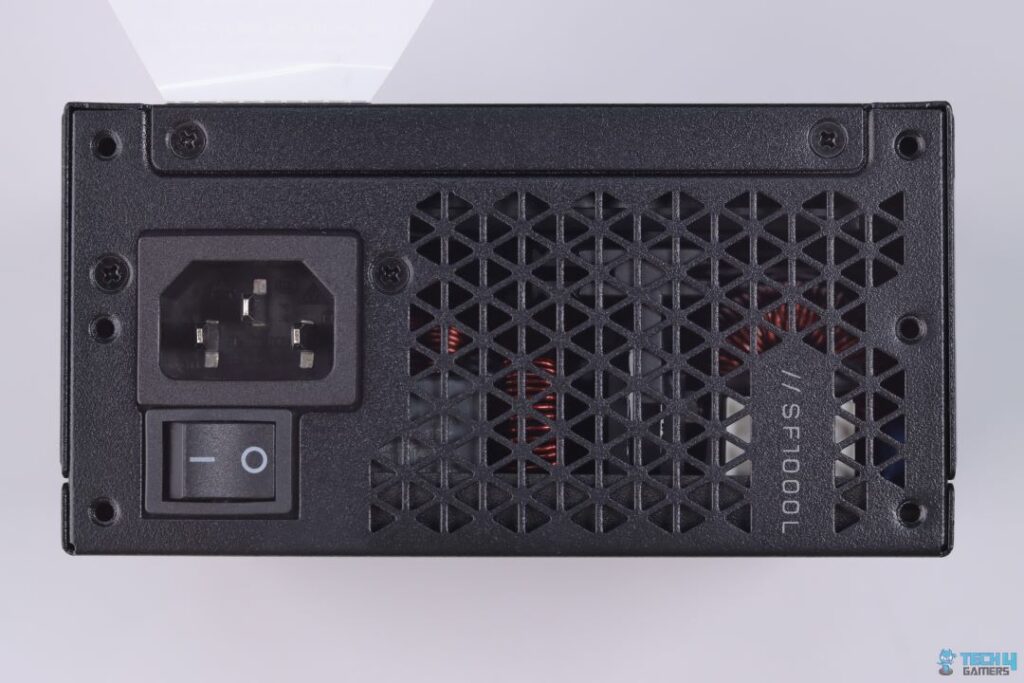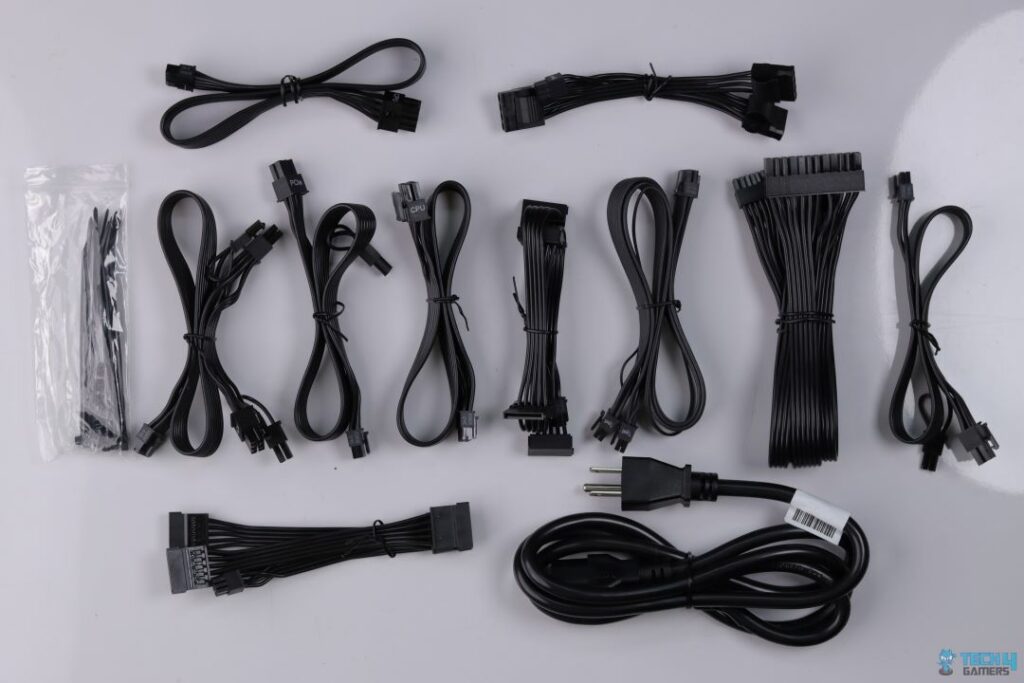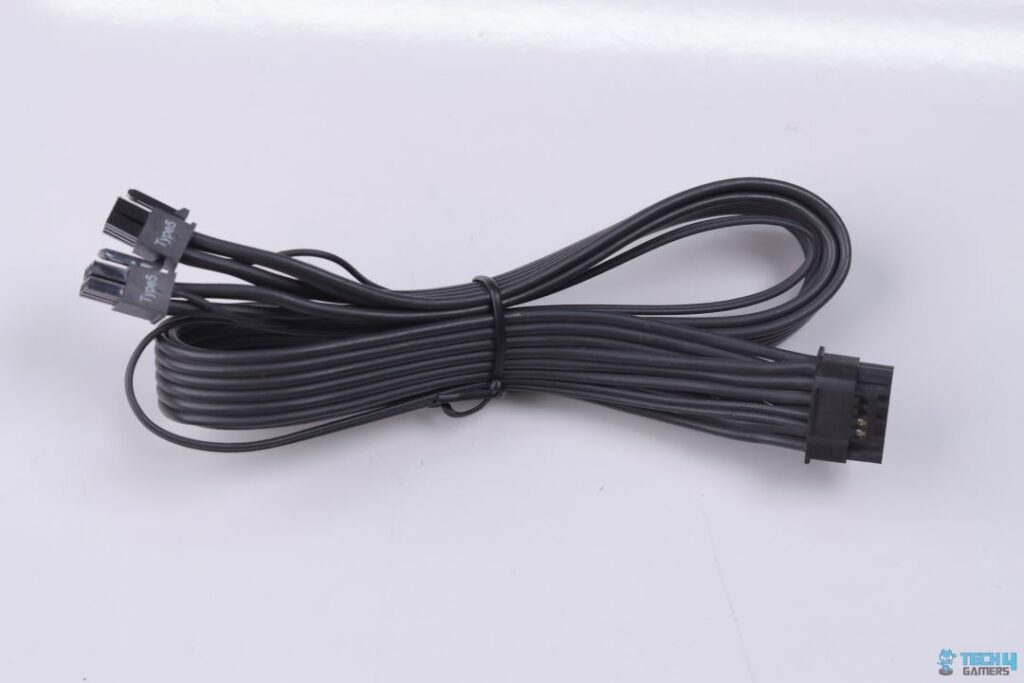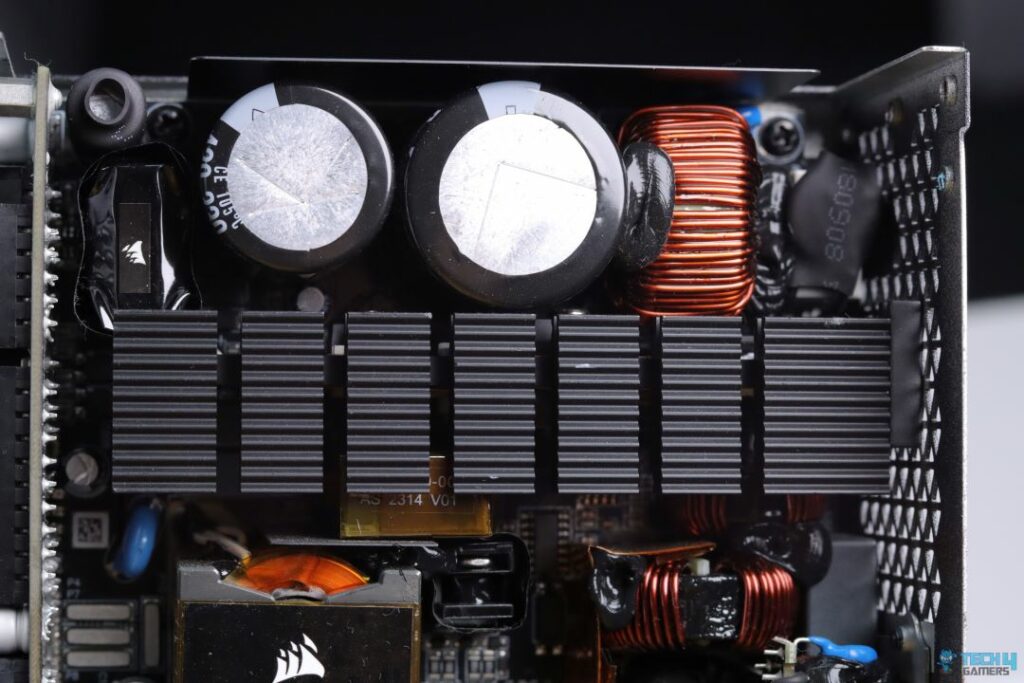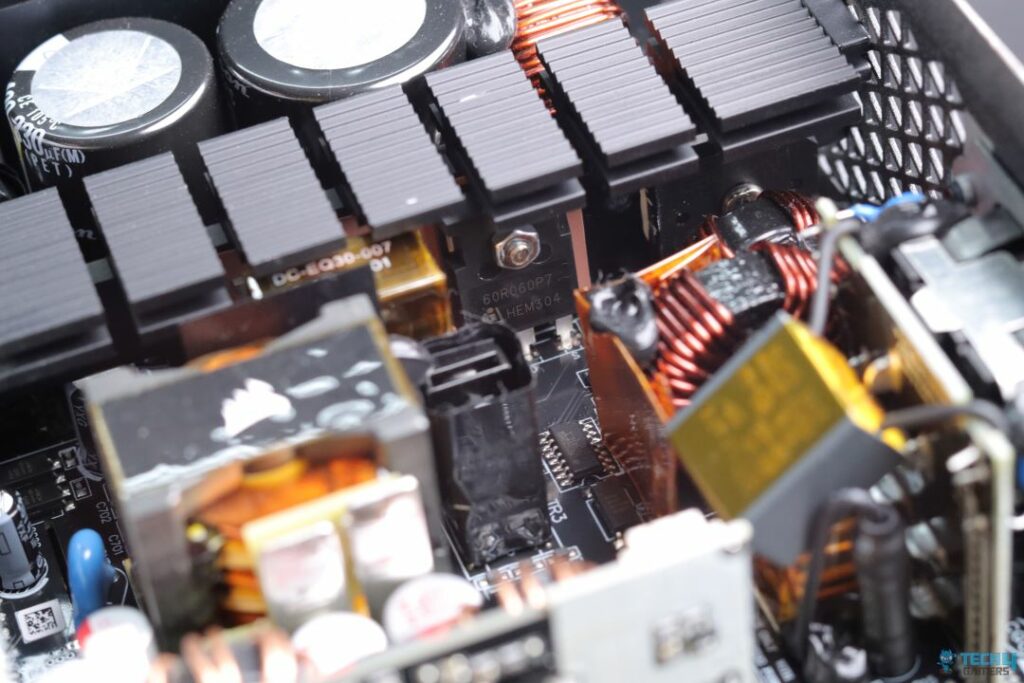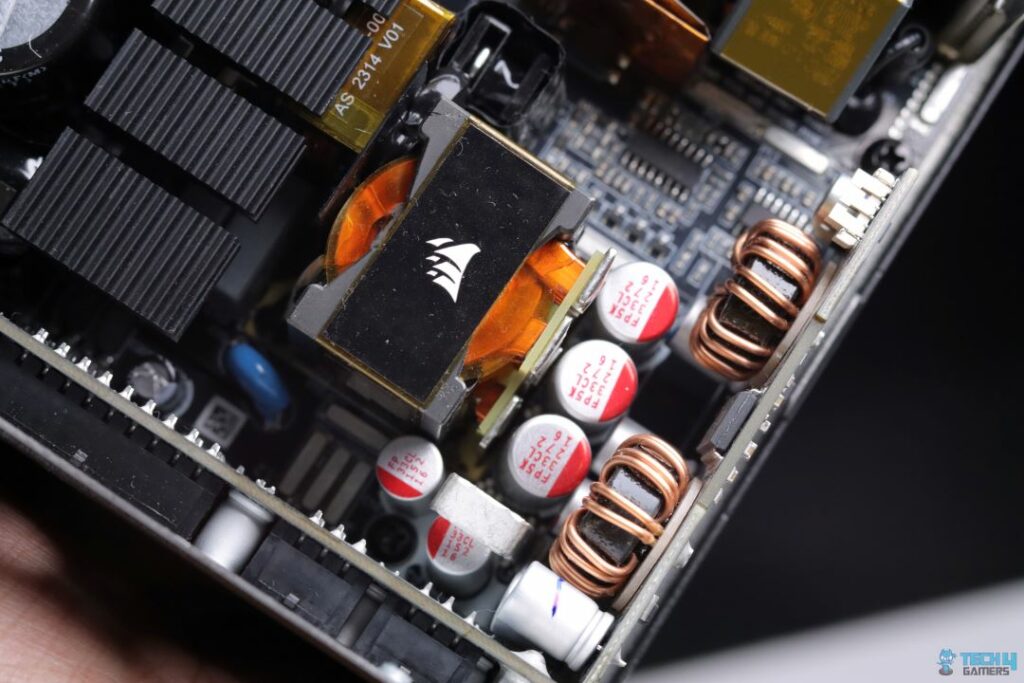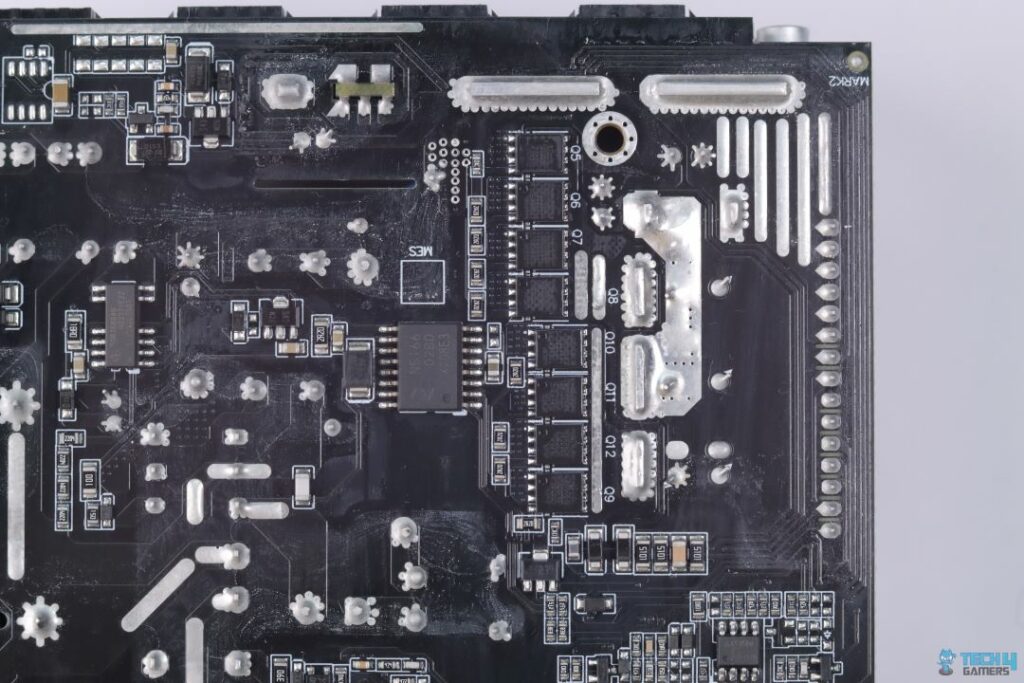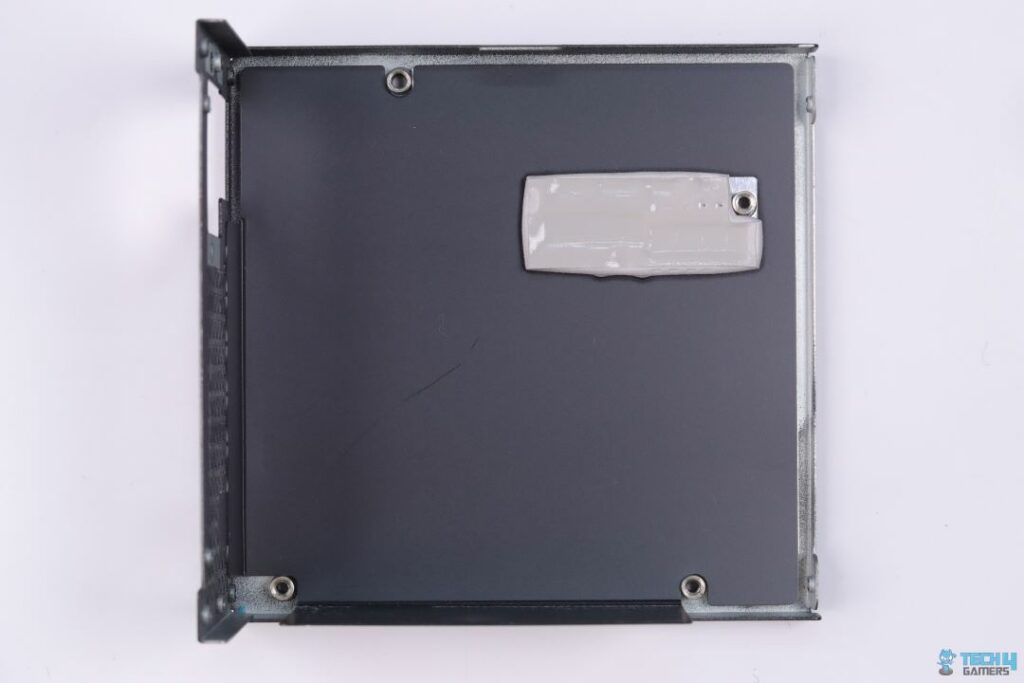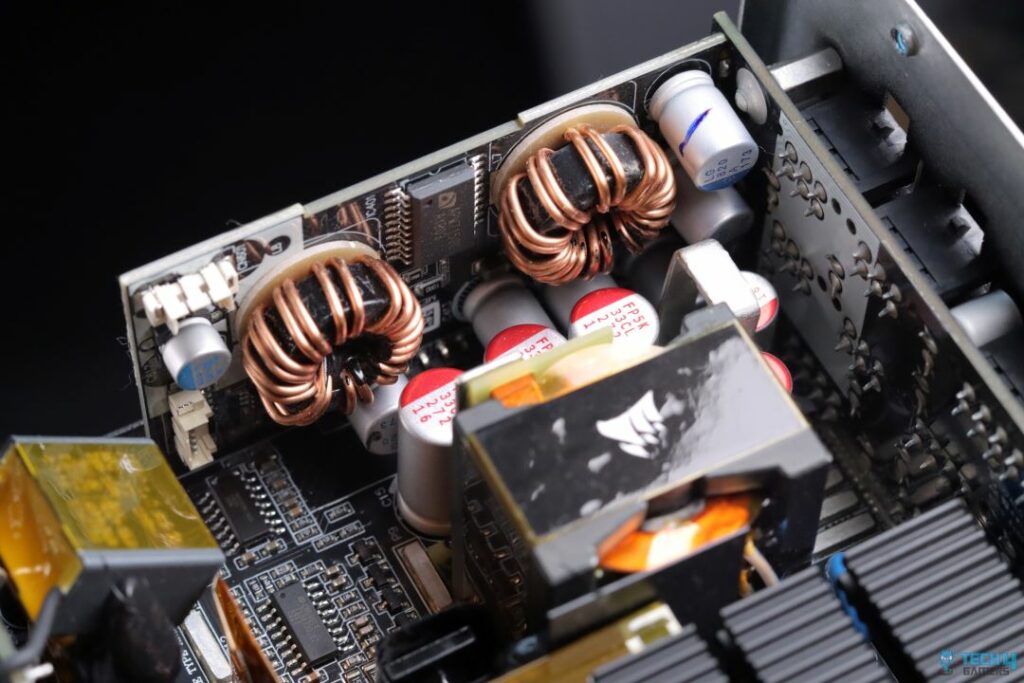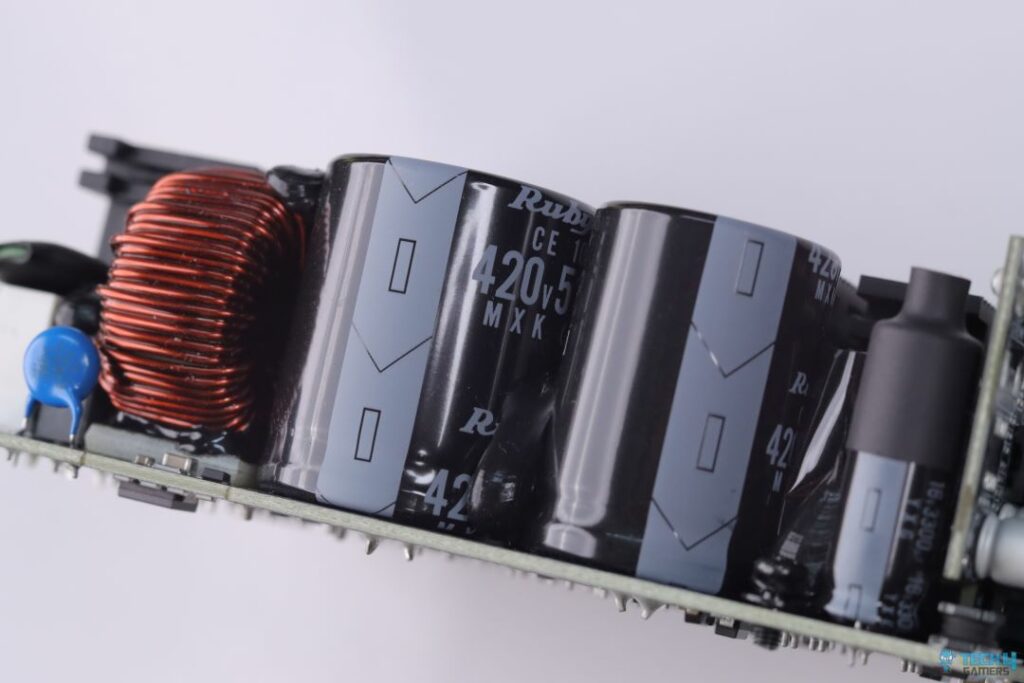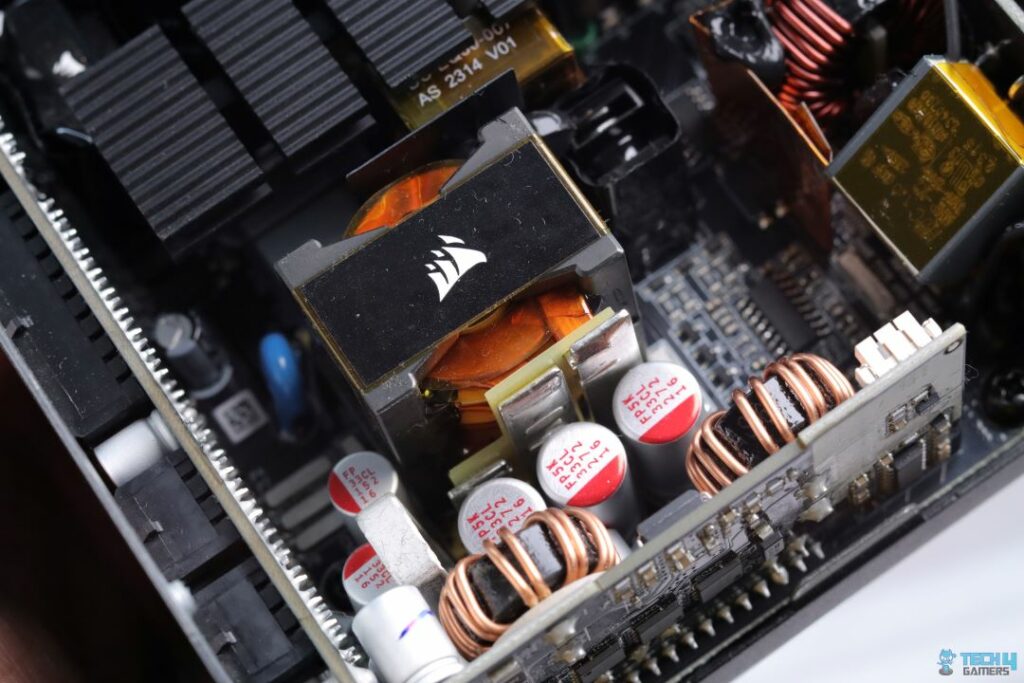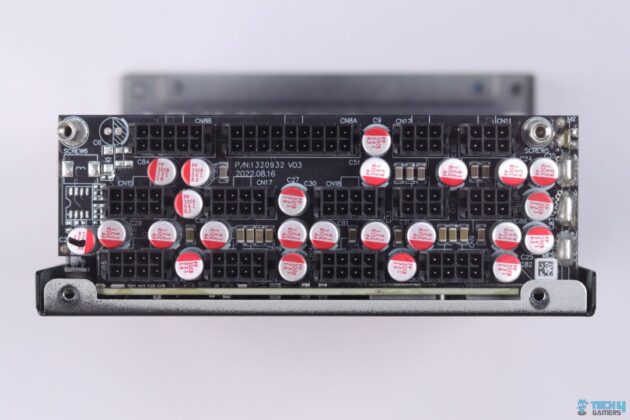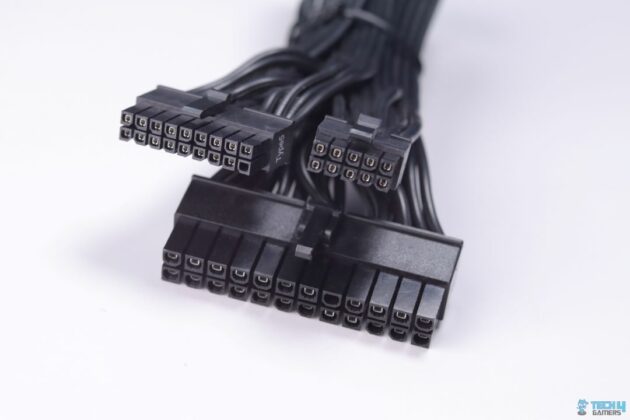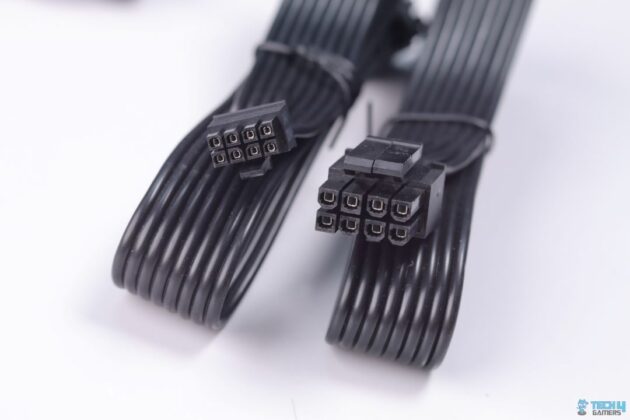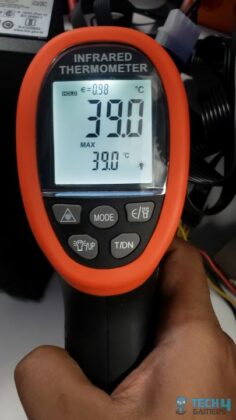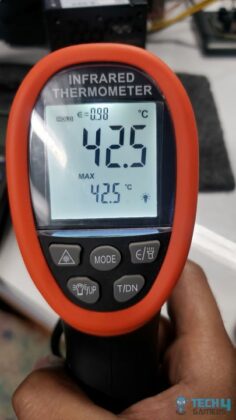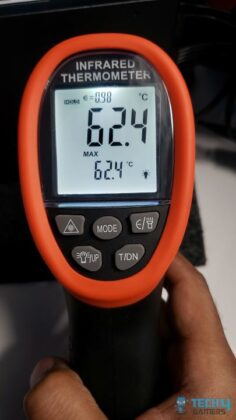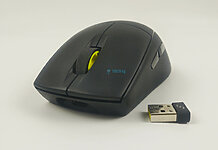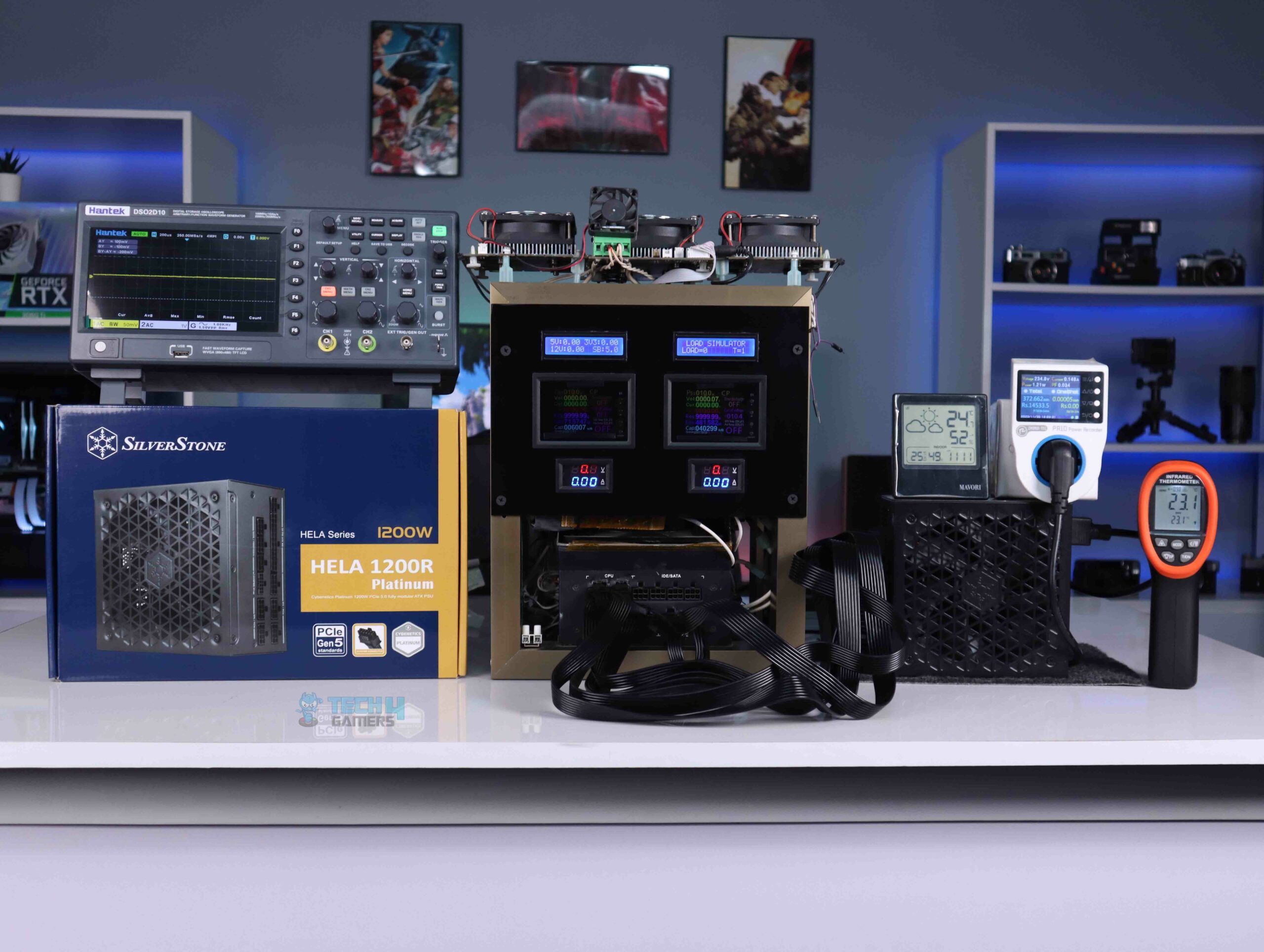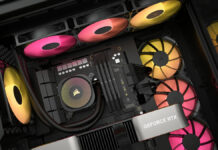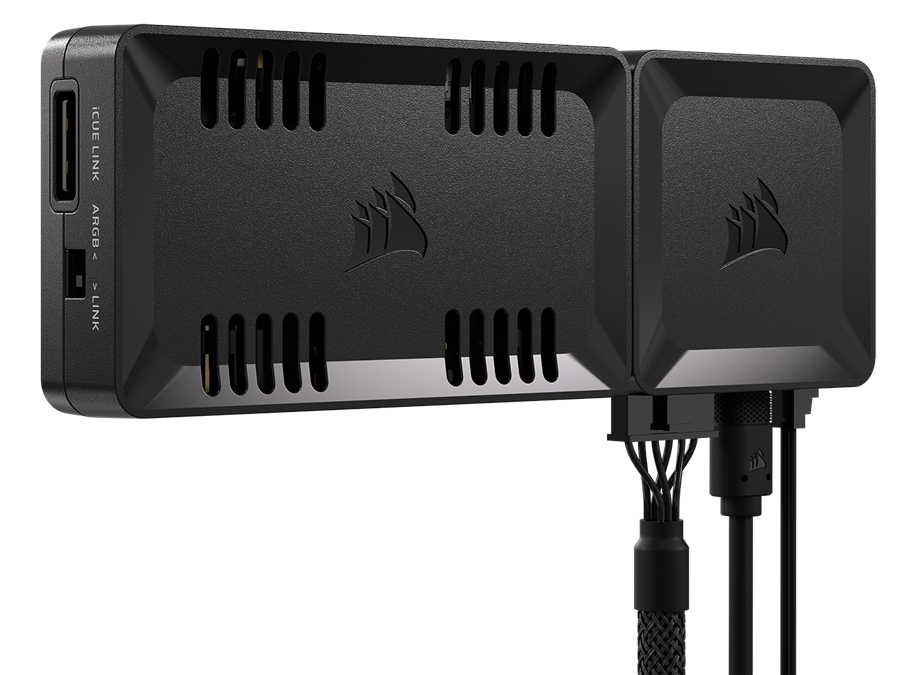Is It Worth It?
Review Summary
The Corsair SF1000L PSU is an SFL power supply that exceeds expectations with its performance and efficiency. Slightly larger than SFX PSUs, it offers better results under max load due to improved heat dissipation. It is designed for high-end, power-hungry builds, with impressive cable management and high quality internals. Despite its compact size, the SF1000L performs on par with or better than many full ATX PSUs, making it a top choice for small form factor cases.
Hours Tested: 8
Overall
-
Performance - 9.6/10
9.6/10
-
Build Quality - 9/10
9/10
-
Efficiency - 9.5/10
9.5/10
-
Value - 9/10
9/10
Pros
- Exceeds 80 Plus Gold efficiency.
- Superior performance to many full ATX PSUs.
- Handles and overclocks demanding builds well.
Cons
- Noisy at 50% load.
- Larger than SFX PSUs, limiting compatibility.
Corsair is among the very few brands that have enough in-house engineering expertise to modify any existing PSU platform from an OEM as they find it suited for their requirements. This is mainly the reason we get to see superior performance in Corsair’s PSUs even when they are utilising a platform which is used by many other brands.
Corsair has had a go in the past for their small form factor SFX lineup; this is the first time they are going for an SFL lineup, which is slightly bigger in size compared to SFX.
In this review, we are (as usual) expecting SF1000L to perform exceptionally well, as its SFL form factor being slightly bigger than SFX will help it achieve better results, especially under max load, which becomes very challenging due to excessive amounts of heat generated from the internal components.
Key Takeaways
- The Corsair SF1000L PSU combines compact size with superior performance, efficiency, and top-notch build quality, making it ideal for high-end, small-form-factor builds.
- You should buy the Corsair SF1000L if you want an SFX PSU that does not compromise on performance to offer the most stable and reliable gaming experience.
- You should not buy the Corsair SF1000L if you are after the most silent small form factor PSU in the market.
Here are the specifications:
| Cybenetics Efficiency | Platinum |
| Cybenetics Noise | Standard+ |
| ATX12V Version | 3.1 |
| Continuous Power W | 1000 Watts |
| Fan Bearing Technology | FDB |
| Fan Size MM | 120mm |
| Multi GPU Ready | Yes |
| Modular | Yes |
| MTBF Hours | 100,000 hours |
| PSU Form Factor | SFX-L |
| Zero RPM Mode | Yes |
| 80 PLUS Efficiency | Gold |
| Warranty | 7 Year |
| Weight | 2.285 |
Packaging & Unboxing
The power supply comes in the iconic Corsair’s highlighter yellow-themed box. The front of the box has the ATX 3.0 label at the top right to show that the PSU complies with the latest ATX 3.0 standards.
At the back of the box, you’ll find some basic specifications, efficiency and noise level graphs, and highlights on the key features like the Cybenetics and 80+ GOLD badges and Zero RPM Mode of the fan.
The overall quality and feel of the box is right on line with Corsair’s standard; it feels premium and high quality. The accessories bundle packs all the necessary cables along with an SFX-to-ATX bracket. This is very useful for those who plan to install this PSU in an ATX chassis.
Design
Measuring at just 130mm x 125mm x 63.5mm, the SF1000L, as also suggested by its name, is an SFF (Small Form Factor) PSU that can easily fit in compact builds. The overall design of the Corsair SF1000L is pretty standard and basic. This isn’t necessarily a bad thing, given that it does the job well with its perforated panels for improved airflow. But if you were in the market for an impressively attractive PSU, I would say the SF1000L won’t cut it.
Regardless, you can see the 120mm Rifle Bearing Fan; the white fan adds a nice touch of accent colours over the black shell, but that’s pretty much it.
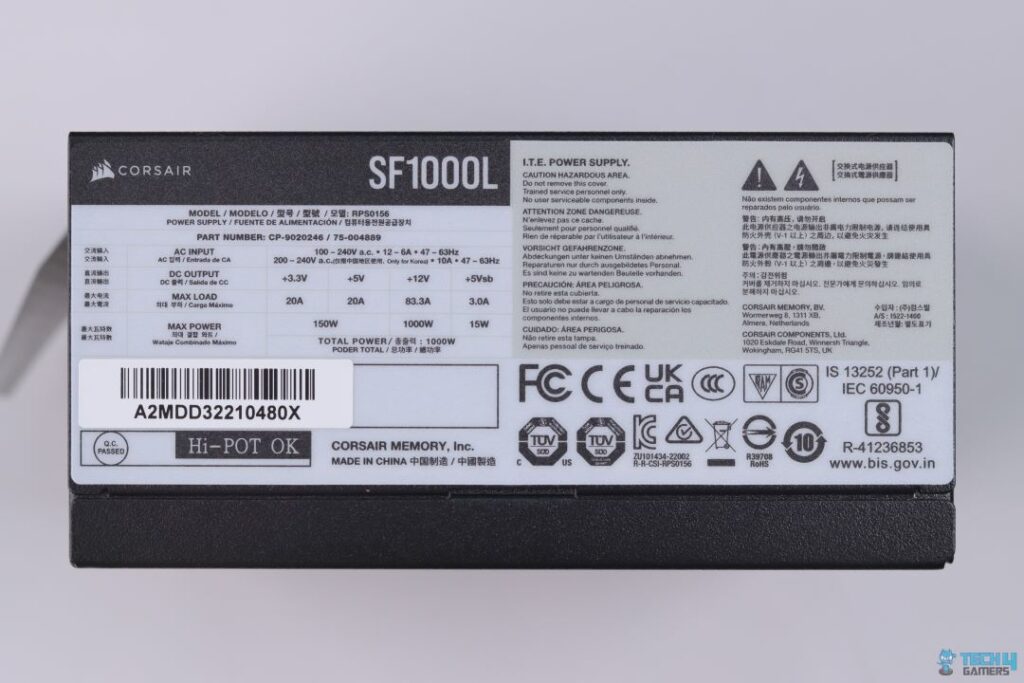
Corsair has printed information about all the necessary specs over each rail on this side, along with all the regulation standards the PSU follows.
Cable & Connectors
The cable and connectors are impressive. Corsair has bundled 2x EPS connectors (each on a dedicated cable) as well as 3x PCIe 6+2 pin on dedicated cables. All the cables are more than enough to handle any high-end build to the point that you can even put a 4090 on it without any hiccups.
Here is the list of all connectors:
| Cable Type | Quantity |
|---|---|
| ATX Connector | 1 |
| EPS Connector | 3 |
| SATA Connector | 12 |
| PATA Connector | 3 |
| PCIe Connector | 6 |
Here is the modular side of the PSU. It is great to see that Corsair has labelled the important connectors for novice builders. Plus, I have always loved Corsair’s micro-fit connectors because they are relatively easier to insert.
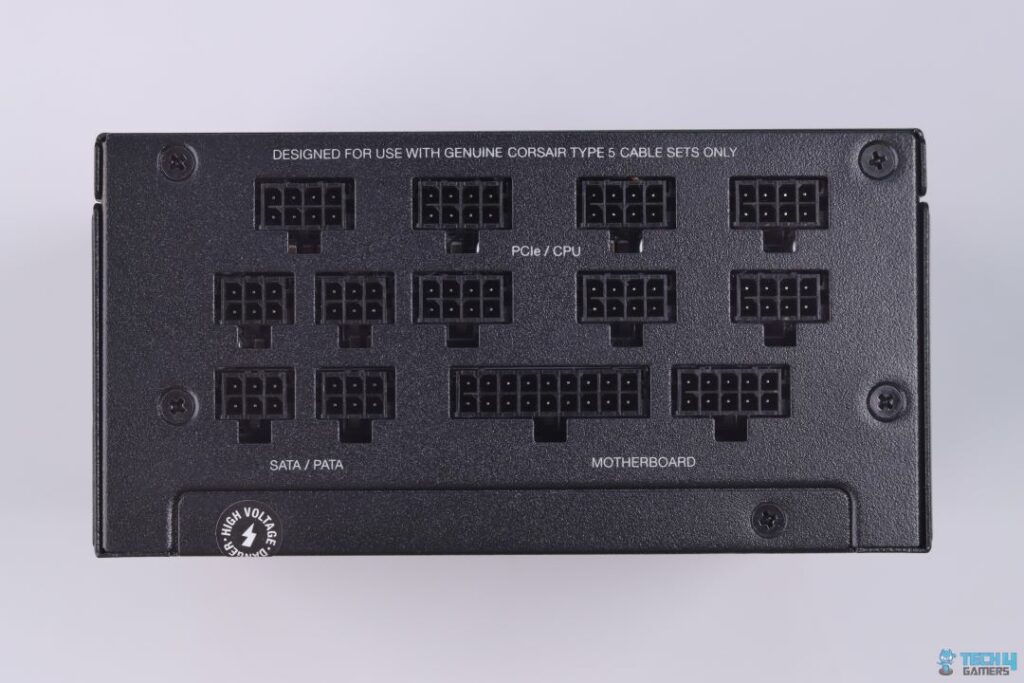
Teardown & Component Analysis
Great Wall is the OEM for Corsair’s SFL PSU lineup, as was the case with their many previous PSUs as well. There are quite a few OEMs that seem to have mastered small form factor PSU designs, and Great Wall is among them.
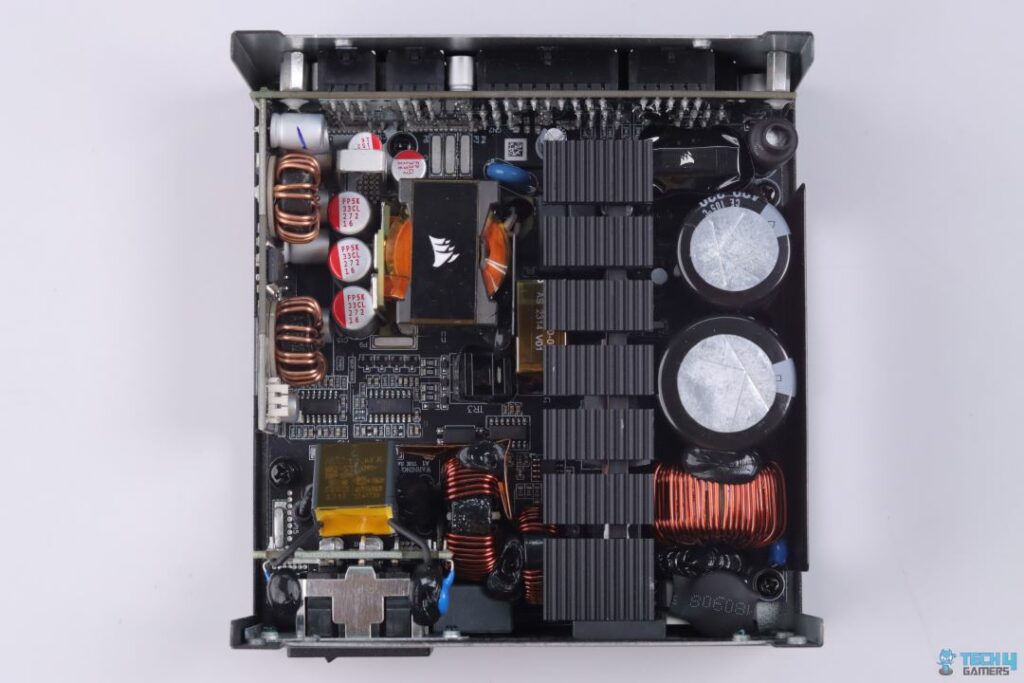
Overall, the internal PSU layout is very clean, and we don’t see clusters of cables that would have caused components to not receive proper airflow. There’s a single piece of an aluminium heatsink that houses two Bridge Rectifiers, two APFC MOSFETs & its boost Diode along with Half-Bridge LLC converter’s MOSFETs, a topology which is usual in Gold-rated PSUs.
Main Heatsink has enough surface area to dissipate the heat of all the primary & secondary MOSFETs. You can also see the TO247 Package APFC MOSFET on the main heatsink.
One of the main reasons small form factor PSUs are hard to engineer is that an OEM has to re-engineer the main 12V rail Transformer by keeping its size to the absolute minimum. This is possible by increasing both the surface area of the transformer’s internal copper wiring and its switching frequency.
12V rail MOSFETs are all soldered on the back of the PCB, utilising the PSU’s metal shroud as their primary heatsink.
You can see the Thermal pad for the 12V rail. There is also a small vertical daughter board responsible for providing minor voltage rail 5V & 3.3V.
All the capacitors (electrolytic & polymers) are from top-of-the-line Japanese manufacturers such as Rubycon, United-Chemicon & FP-Cap. Such quality components are easily gonna surpass the 7-year long warranty period.
This is the first time we get to see Mini-fit Jr. connectors fitted on the back of any PSU and we just love them! They are not only tiny cute & cuddly but also require very less insertion force especially for the 24 pin connectors. This is one of many reasons we love & really appreciate Corsair’s engineering & innovation.
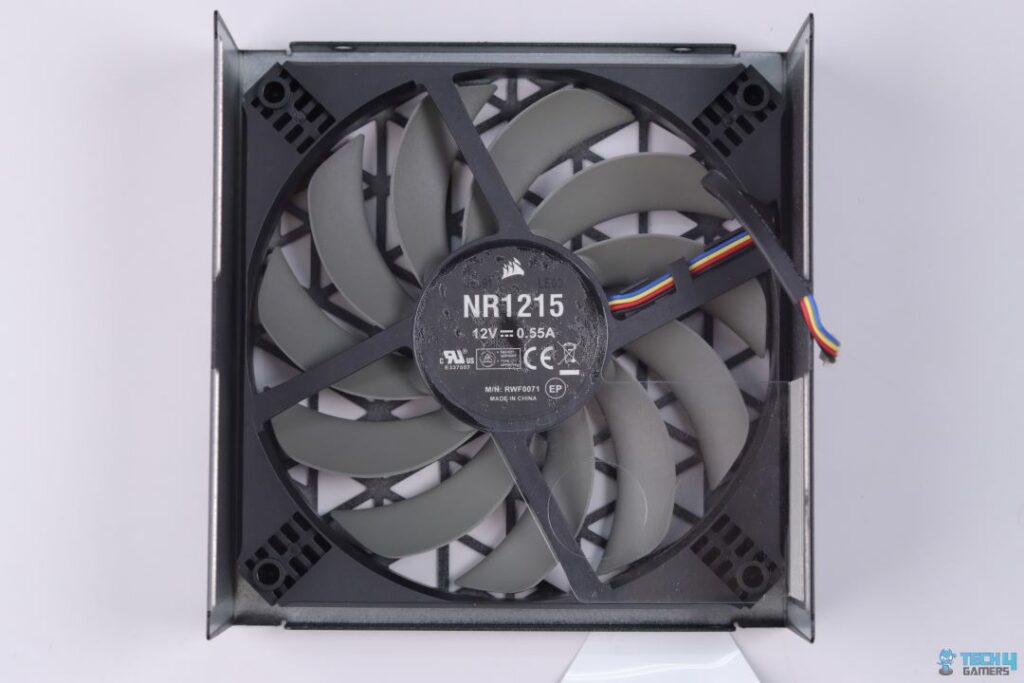
A 120mm fluid dynamic bearing fan starts spinning when the PSU reaches a specific level of temperature. With the high efficiency of SF1000L, fan speed curve can be slightly tuned down for less audible operation.
PSU Load Testing
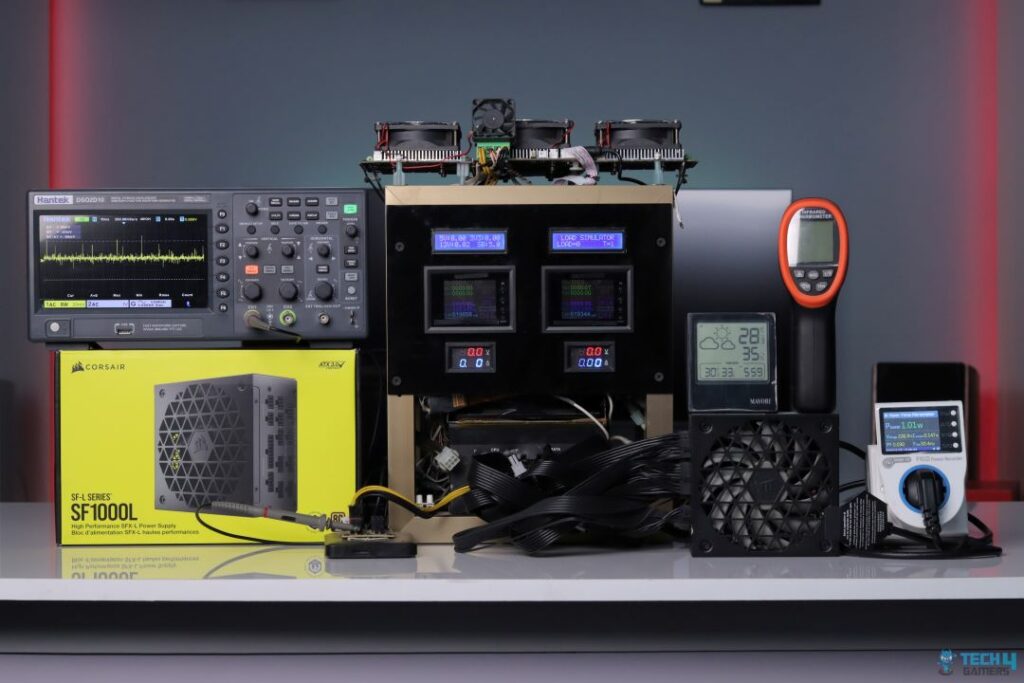
12V & Minor Voltage Rails Regulation
| Load in % | 12V | 5V | 3.3V |
| 20% | 12.05V | 5.06V | 3.33V |
| 50% | 12.03V | 5.06V | 3.33V |
| 70% | 12.01V | 5.07V | 3.34V |
| 90% | 12.00V | 5.08V | 3.35V |
| 100% | 12.00V | 5.07V | 3.34V |
Voltage regulation is very tight. A very impressive performance for an SFL PSU.
PSU Efficiency
| Load in % | Power Factor | Efficiency |
| 20% | 0.939 | 92.29% |
| 50% | 0.966 | 94.12% |
| 70% | 0.976 | 93.89% |
| 90% | 0.981 | 93.48% |
| 100% | 0.983 | 92.33% |
This platform is well tuned for efficiency and although rated for 80 Plus Gold, it easily reaches Platinum level of efficiency in our test.
Voltage Ripple Performance
| Load in % | Voltage Ripple |
| 20% | 11.2mV |
| 50% | 10.4mV |
| 70% | 11.2mV |
| 90% | 11.8mV |
| 100% | 12.0mV |
This is the test where even full ATX PSUs struggle if they aren’t designed well, but oh boy Corsair’s SF1000L performed exceptionally well and even much better than the full ATX PSUs we have reviewed in the past.
Corsair & Great Wall has designed a beast of a platform especially for the ones who are into extreme OCing.
Temperatures
Due to SF1000L’s extremely high efficiency, this PSU and its fan didn’t have to struggle much, even with the max 62.4C temperature on the back (where the 12V rail MOSFETs are located)
Should You Buy it?
Buy It If
✅You want a jack of all trades in an SFF: The Corsair SF1000L is a mix of both high efficiency & extremely well build quality that can easily handle and even overclock the most power-hungry desktop processors & GPUs available today and even for upcoming generations. Plus, if your utmost priority is to use it in a small form factor case, then we don’t think you will have to look elsewhere.
Don’t Buy It If
❌You’re fine with an ATX PSU: If a small form factor isn’t really your requirement, then SF1000L isn’t for you as you can easily buy a full ATX PSU for a lot cheaper than this.
Final Verdict
For those who want an SFL PSU for their small form factor case that will house some of the most demanding and power-hungry components, Corsair’s SF1000L, with its extremely well-built, latest ATX 3.0 specs and innovative design connectors, is our highly recommended pick!
Community Poll
Coming Next: XPG Core Reactor II VE 850W Review
Thank you! Please share your positive feedback. 🔋
How could we improve this post? Please Help us. 😔
[Errors Troubleshooting Expert]
Arsalan Shakil (aka GuyThatDoesEverything on YouTube) is a PC Tech Enthusiast and Electronic Geek. With over 10+ years of experience in Electronics, he then decided to explore Software Engineering to design embedded products and automate existing hardware solutions.
When he started tearing down old cameras to understand how they worked, he was shocked (literally, when he got zapped by a flash discharge capacitor), giving him the power (debatable) to fall in love with videography/photography. He also started making some fun videos that later became YouTube tech reviews.
Skills:
- 10+ years of experience in Electronics design, embedded solutions, and prototyping
- Majored in Software Engineering
- Research paper publication in IEEE for Embedded Military Uniform & LoRa WAN wireless technology
- Specialized in IoT Solutions
- PC Enthusiast & PC Modder
In his local region, he’s known to expose cheap PSU brands, often claiming fake certification or false claims on the box. He’s a true nerd and needed some friends in his life. Then he met some guys who work at Tech4Gamers, and they also came out to be equal nerds who suggested he join Tech4Gamers as a Hardware Expert.


 Threads
Threads
